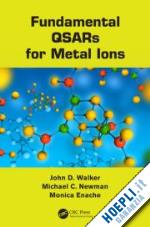John D. Walker has 44 years of professional academic, industrial and government experience in environmental toxicology and chemistry. Since 1989 he has been Director of the Toxic Substances Control Act Interagency Testing Committee (ITC), The ITC is an independent advisory committee to the U.S. Environmental Protection Agency (U.S. EPA) Administrator with representatives from 14 U.S. Government organizations. The ITC’s statutory responsibility is to identify industrial chemicals that are likely to harm humans or the environment and recommend them for testing to develop data needed to assess their risks. Prior to being selected as the ITC’s Director John was a senior scientist with the U.S. EPA, a regulatory toxicologist with the U.S. Food and Drug Administration, an environmental scientist with Lockheed Martin and a Research Associate at the University of Maryland.John received his bachelor’s degree in chemistry and biology magna cum laude from Kent State University where he was elected to Phi Beta Kappa. He studied microbiology at the University of Dayton where he was elected to Sigma Xi and studied aquatic toxicology at the Ohio State University’s Franz T. Stone Laboratory while earning his Ph.D. His M.P.H. is from the Johns Hopkins University School of Public Health. John is a Charter Member of the Society of Environmental Toxicology and Chemistry (SETAC), an Emeritus Member of the American Society for Microbiology and the American Academy of Microbiology and a former Editor of SETAC’s International Journal, Environmental Toxicology and Chemistry. John co-authored the Laboratory Manual for Marine Microbiology and edited the book, QSARs for Pollution Prevention, Toxicity Screening, Risk Assessment and Web Applications. He has authored or co-authored 160 peer-reviewed publica-tons and has written 140 abstracts of presentations for national and international professional society meetings. John was the first recipient of the American Fisheries Society/U.S. EPA Science Achievement Award in Biology/Ecology and has been awarded 5 U.S. EPA Bronze medals. He was awarded the U.S. EPA’s Unsung Hero Award for his work with Special Olympics. John is married with 4 children and 2 grandchildren. Michael C. Newman is currently the A. Marshall Acuff Jr. Professor of Marine Science at the College of William and Mary’s Virginia Institute of Marine Science, where he also served as Dean of Graduate Studies for the School of Marine Sciences from 1999 to 2002. Previously, he was a faculty member at the University of Georgia’s Savannah River Ecology Laboratory. His research interests include quantitative ecotoxicology, environmental statistics, risk assessment, population effects of contaminants, metal chemistry and effects, and bioaccumulation and biomagnification modelling. In addition to more than 125 articles, he has authored 5 books and edited another 6 on these topics. The English edition and Mandarin and Turkish translations of Fundamentals of Ecotoxicology have been adopted widely as the textbook for introductory ecotoxicology courses. He has taught at universities throughout the world, including the College of William and Mary, University of California–San Diego, University of Georgia, University of South Carolina, Jagiellonian University (Poland), University of Antwerp (Belgium), University of Hong Kong, University of Joensuu (Finland), University of Koblenz–Landau (Germany), University of Technology–Sydney (Australia), Royal Holloway University of London (UK), Central China Normal University, and Xiamen University (China). He has served numerous international, national, and regional organizations, including the OECD, U.S. EPA Science Advisory Board, Hong Kong Areas of Excellence Committee, and the U.S. National Academy of Science NRC. In 2004, the Society of Environmental Toxicology and Chemistry awarded him its Founder’s Award, "the highest SETAC award, given to a person with an outstanding career who has made a clearly identifiable contribution in the environmental sciences." Monica Enache hasthirteen years of professional academic experience in Biology. Since 1999 she has been working at the Faculty of Biotechnology of the University of Agricultural Sciences and Veterinary Medicine of Bucharest, Romania. Prior to joining the faculty she has carried out her PhD degree in Liverpool John Moores University (UK), and received her Bachelor of Science degree from the Faculty of Biology of the University of Bucharest (Romania). She is currently a member of the National Society of Cell Biology in Romania, and has authored or co-authoredthen publications andfourteen abstracts for presentations at national or international scientific meetings.











